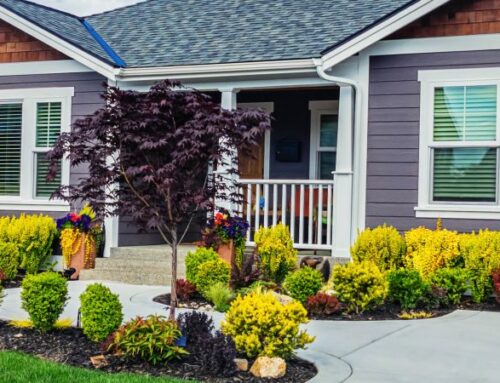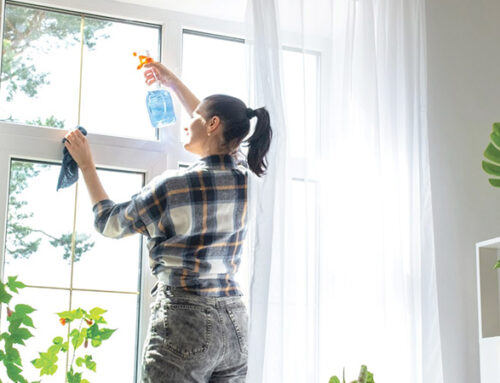About 20 years, most hardwood floors start showing their age; scratches, dullness and discoloring are the most common signs that the wood is due for refinishing. Fortunately, the typical ¾-inch-thick hardwood floor can be sanded about six to eight times during its lifetime. So unless you live in a particularly old house, or a previous resident was an especially aggressive refinisher, chances are good that your wood floors can be brought back to life.
You need at least 1/32 of an inch of wood on the top of your floors to sand them. If your home has heat registers in the floor, remove a grille and take a sidelong look at the surrounding planks to see if that’s available. If that’s not possible, you can remove a plank from an inconspicuous location (like the inside of a closet) or ask a professional floor refinisher to appraise the situation. You can’t refinish laminated wood floors (such as Pergo); you might be able to refinish an engineered wood floor, depending on the finish and how thick the top layer of wood is.
Project: Refinishing hardwood floors.
Why: To restore the wood’s original appearance and shine, change its color or finish, or blend it with newly added wood.
Who to hire: A professional hardwood floor refinisher. You can either choose someone who specializes in refinishing or hire a hardwood floor installer, as most of them do refinishing, too.
Compile leads from friends, the Yellow Pages or online listings like Houzz, looking for professionals who have certification from the National Wood Flooring Association (NWFA). Read online reviews, gather leads, then call and ask:
How long has the company been in business?
Do they use a dust control system?
What kind of polyurethane do they prefer?
Get three competitive bids, says Butch Kirk, owner of San Jose Hardwood Floors, Carpet & Vinyl in San Jose, California. Contact your Contractors State License Board to confirm that the company is bonded, has workers’ compensation and is not subject to any pending arbitration or claims. The Better Business Bureau is another reliable resource.
Who not to hire: Yourself. While many of us know people who have sanded their own floors, professional floor refinishers strongly caution against this. While their warnings might sound self-serving, they point out that you can’t get professional-quality results with the 110-volt sanders available from rental companies (pros use 220-volt equipment), and by the time you’ve acquired all the tools you need and invested the time, you’re not going to save a lot of money.
“In the end you’re going to screw it up, and you’re going to pay more money,” warns Roland Arjukese, owner of Royal Oaks Flooring in the Washington, D.C., area. And don’t be seduced by offers from painters or handypeople, either, Arjukese adds. “People should look for a professional who’s only doing one thing,” he says. “You don’t go to a shoe repairman and ask him to do an eye exam.”
Cost range: Most floor refinishers charge by the square foot, but prices will vary considerably, depending upon your region, your home’s accessibility, the size of the job and the work you want done (including the color of the stain — dark stains take more prep time).
Plan on spending anywhere between $2.50 and $5.25 per square foot for sanding, staining and three coats of finish. If you live in an apartment building serviced by an elevator, or someplace where parking is a challenge, prices could double.
Typical project length: Allow three to seven days, depending on the size and complexity of the project. Due to dust, odor and general disruption, it’s a good idea to move out of the house while the work is being done.
Permit: Not required.
Best time to do this project: You can refinish floors anytime. But if you’re planning on storing furniture outside while the work is being done, you’ll want to avoid rainy weather.
Considerations: If only a certain area of the floor looks bad, just do a light sanding and sealing in that section, rather than doing the whole floor.
Alternatively, if you don’t want to go to the hassle and expense of refinishing the floors, consider having them rescreened. In this process a machine roughs up the existing polyurethane, then the floor is buffed and a new coat of polyurethane is applied. This is not to be confused with “sandless” hardwood floor refinishing, a less effective process that simply cleans the existing floor.
Home – Where your story begins…
To learn more about how Coldwell Banker Grass Roots Realty can help you buy or sell a home, please call one please call one of our four offices in:
Grass Valley Office at 530-273-7293
855 Sutton Way, Grass Valley, CA 95945
Nevada City at 530-265-3282
108 Union Street, Nevada City, CA 95959
Penn Valley at 530-432-1131
11364 Pleasant Valley Rd, Penn Valley, CA 95946
South County/LOP at 530-268-1575
10193 Combie Rd, Auburn, CA 95602





